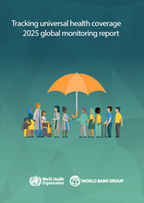Understanding global health through data collection
Reliable health-related statistics are essential to understanding the state of health care delivery around the world. The insights gleaned from analysing these data points can help guide policy decisions, funding and research agendas to better address gaps in health care service provision and meet the most urgent needs. Health trends change quickly, and ongoing efforts are required to improve the availability, quality and use of health information. At present, many countries lack the health information systems they need to accurately monitor health trends and inform decision-making.
The World health statistics, published annually since 2005, is WHO’s annual compilation of the state of the world’s health through data recorded from its 194 Member States. Since 2016, the World health statistics series has focused on monitoring progress toward the Sustainable Development Goals (SDGs), and the 2019 edition contains the latest available data for the health-related SDG indicators. Crucially, these data are disaggregated where possible by WHO region, World Bank income group and sex. Through analysis and by allowing other researches to use these data in their own studies, WHO seeks to make information about global health and health care delivery available to anyone working towards these common goals.

-cideim-project-paho.tmb-479v.jpg?Culture=en&sfvrsn=2656bc2c_3)
